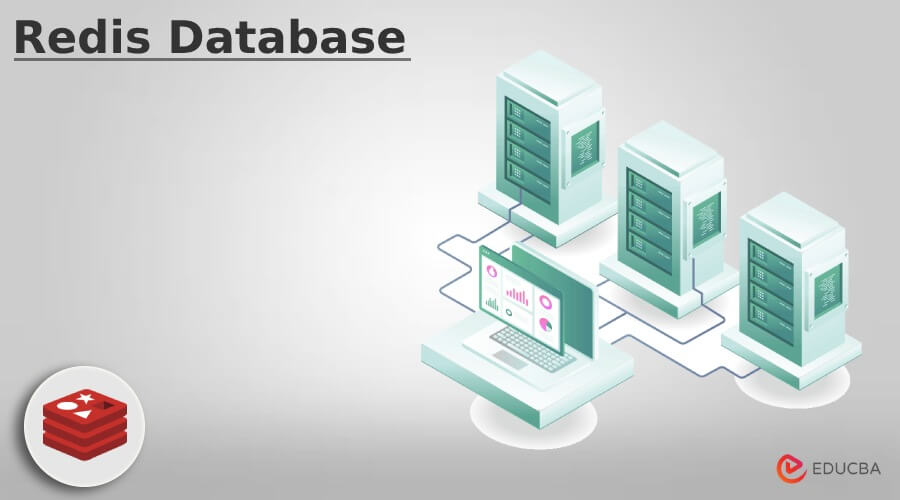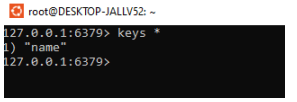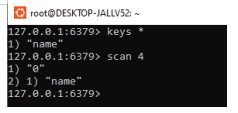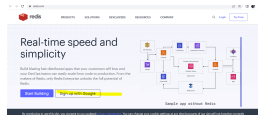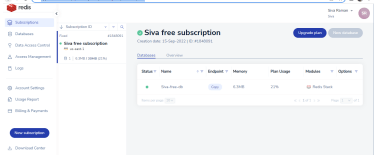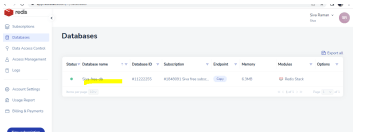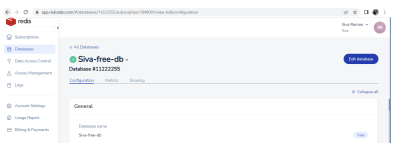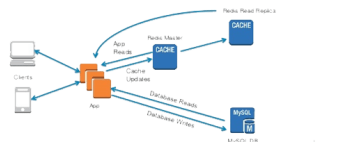Introduction to Redis Database
Redis is one of the open-source technology and it has an in-built memory data structure that can be used to store the datas it is called a database cache through the help of a message broker for sending and receiving the live inputs from the user’s key-value data is the main storage for NoSQL database which serves as the unique identifiers of associated values.
Key Takeaways
- Redis is the NoSQL database solution.
- It does not have native java support.
- A popular memory data structure that can be persisted on disk.
- It provides data structure like database, cache, and message broker.
- It’s a remote data structure.
What is Redis Database?
An in-built memory data structure that can be used as the key-value pairs in distributed datas through the help of message brokers. And it has the optional durability for Redis support kind of abstract data structure on the database collections like lists, strings, maps, sets, sorted sets, etc.
Redis instance will help to create the instance for n number of databases that included the keys and values for a variety of data types on each server instance. A key-value datas are the mapping for NoSQL databases that determine the database sync and backup for the current data snapshot. That helps to restore the database whenever we needed on the application and database backup will save and temp file like .rdb file is a database dump file that holds the serialization.
Which Keys Serve the Redis Database?
Generally, the Redis database numbers are within a proper ordered range that can be started from 0 to 15 numbers. It may be of any value that comes under the Redis instance. To change the database from the selected command will search the keys first and then match the specific pattern including the asterisk operator. By using this operator, we can find the data results using the keys from the data store and the ping command will check whether the redis server is running on the hosted machine or not.
Using the Redis commands to manage the keys regardless of what data types to behold on each session. We can also rename the key with the help of rename keyword and randomkey to generate the random keys that are not associated with the data collections like list, map, etc. So, it can be configured and mapped to the database match pattern for all the keys in members themselves to be stored in the dictionary using the hash table technique. Keys command will work with iterating datas and dictionaries for matching the values for a single array type other commands work similarly and affect the performance of database execution.
Code:
Keys *Output:
The above key is used to return all the keys which are on the database.
Select:
To select the redis database with a specified index start from 0.
Scan and Count:
Scan is one of the commands that can be picked up with data iteration on the Redis key space.
Why do we Use Redis Database?
It is in-memory database storage that cannot store large datasets with the database memory size, and it is largely stored in the database RAM size. Data is 1/3rd RAM size for fatal limitation on Redis database codes that can be called it as a complex set of codes which helps to identify the simpler lines. The distributed data cache is the most common usage for populating the user inputs and the cases will create the NoSQL database and the Message brokers with publishing and subscribe mode. Redis is good support and the choice for long-term goals and saves the data from the HDD time to provide the database persistence level and storage for current state data that allow scalability on data source. It supports snapshots with a full set of memory in time for data crashes and performance varies with NoSQL-DB.
The multiple set of nodes for minimizing the data stacks in risks along with a more speedy cache that can be guaranteed for more data consistency. Database which differs from the store sessions on data loss the RAM based structure for to access the data at least 1000 times faster than the random disk.
How does Redis Database Works?
Data in Redis databases keep stored with key-value pairs format and each set of keys can be formatted simple. Keys with key names and the string value format complicated the hash object that contains the numerous key-value pairs. Redis supports the data guide in each series and data type to set the new keys and query for fetching the keys.
Steps to work with redis database:
1. Navigate to redis.com and signup with google or set up and log in as the Redis account.
2. redis
3. Here we are using Google account to access the account after sign-in.
4. https://app.redislabs.com/#/subscriptions/subscription/1848091/bdb
5. After sign-in the default database and free subscription are created.
6. We can export the database by clicking the export all option.
7. Edit the database whichever we required.
Redis Memory Database Structure
It follows Bitmaps along with a compact data structure for storing binary datas and logic. So that AND, OR, and XOR gates.
The above diagram shows that data will send by the client system and it goes through the cache manager which helps to read the app and cache datas. It also updates the data cache with the Ready Master database to replicate the datas. String:: Binary format data types to safe the fields and values.
Example of Redis Database
Given below is the example mentioned:
Code:
import redis.clients.jedis.Jedis;
public class first {
public static void main(String[] args) {
Jedis vars = new Jedis("localhost");
System.out.println("Server connected successfully");
System.out.println("Checking Server s running "+vars.ping());
}
}Output:
Explanation:
- For the above example, we must connect the redis database.
- We need to import the jars like Jedis.
- Then we created an instance for the localhost or server ip address.
- Then using a print statement, it will validate the connection.
FAQ
Given below are the FAQs mentioned:
Q1. Define Redis database.
Answer: It is a NoSQL database structure which stored as the key-value pairs.
Q2. What are the two types of processes in Redis?
Answer:
Redis Client
Redis Server
Q3. What are the features of the Redis Database?
Answer:
- It’s a speed
- Persistence
- Supported multiple languages
- Collection data structures
- Sharding
Conclusion
Redis has more ability to integrate the database memory settings and that will be more helpful to perform the application performance. Database connection pooling is more thread safety and the issues which mapped on the Redis features available in Jedis and other client jars to connect the database.
Recommended Articles
This is a guide to Redis Database. Here we discuss the introduction, which keys serve the redis database? working, structure, example, and FAQ. You may also have a look at the following articles to learn more –

